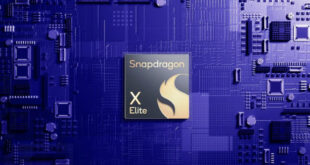
Getting into space is hard, and one of the reasons is that it takes a lot of energy to break free of Earth’s gravity. So far, the only way we’ve found to do that reliably is with rockets, but a startup called SpinLaunch has something else in mind. Using a giant vacuum chamber and a rotating hypersonic tether, the firm hopes to essentially throw satellites into orbit. SpinLaunch has just completed its first kinetic test launch by heaving a vehicle high into the atmosphere.
The key to SpinLaunch’s vision of the future is the Orbital Accelerator, a massive centrifuge that can accelerate a small vehicle to thousands of miles per hour. The company reaches these incredible speeds by running the centrifuge inside a vacuum chamber to reduce friction. When the hypersonic tether reaches the appropriate speed, it detaches from the vehicle in less than a millisecond. That sends the payload up through a chimney-like tube atop the accelerator. If all goes to plan, the system could send about 440 pounds (200 kilograms) into space, and almost all of the energy used is electric.
The catch, however, is that the Orbital Accelerator doesn’t exist yet. SpinLaunch has started with a smaller version, which is still pretty massive. At 165 feet (about 50 meters), the Suborbital Accelerator is taller than the Statue of Liberty, and it works. SpinLaunch succeeded in flinging a test vehicle up and out of the vacuum chamber and tens of thousands of feet into the air. That’s a great start!
By starting small, SpinLaunch is able to validate its aerodynamic models and then scale-up. The first kinetic launch only used about 20 percent of the system’s total power, too. Eventually, SpinLaunch plans to have a full ecosystem of space technology for the Orbital Accelerator. While the payloads won’t need rockets to leave the atmosphere, the vehicle will still have a small rocket motor inside the aeroshell to help position it in orbit. However, the fuel for that weighs very little. In a traditional rocket launch, most of the initial mass is fuel. The Orbital Accelerator has the potential to be a very inexpensive way to get small satellites into orbit—even cheaper than a reusable rocket like the SpaceX Falcon 9.
One potential issue is that to throw a few hundred kilograms into space, the hypersonic tether needs to move extremely fast. The payload will therefore be subjected to extreme centrifugal force. SpinLaunch says it will be “easy” to optimize payloads for kinetic launch. There’s not a lot of room for error, though. Even a small issue could tear the Orbital Accelerator apart if it occurs at launch speed. SpinLaunch isn’t the first company to explore this concept, but it is the first to actually build it. Hopefully it’s onward and upward from here on out.
Now Read:
Subscribe Today to get the latest ExtremeTech news delivered right to your inbox.
© 1996-2021 Ziff Davis, LLC. PCMag Digital Group
ExtremeTech is among the federally registered trademarks of
Ziff Davis, LLC and may not be used by third parties without explicit permission.
We strongly encourage you to read our updated PRIVACY POLICY and COOKIE POLICY.
 #Bizwhiznetwork.com Innovation ΛI |Technology News
#Bizwhiznetwork.com Innovation ΛI |Technology News



